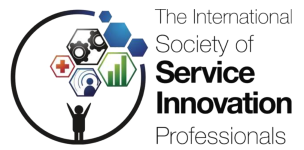
The T-Summit 2016, convened at the National Academy of Sciences in Washington, DC March 21-22, 2016, was an ambitious undertaking to bring together government, industry and academia to,” maximize dissemination on the latest learnings of T-Shaped professionals, and how policies, curriculum, and student and employee behavior can prepare the future workforce.”
The third annual conference brought workforce stakeholders in this emergent movement towards recognizing T Shaped individual career development. Simply, T Shape is a way to navigate and present individual career experience with breadth of experience (top of the T) with depth of mastery of a recognized discipline (the I of the T). The core idea is to facilitate the ability of professionals to work in collaborative teams with others in complementary disciplines and to be able to pivot with uncertainty and changing workplace requirements.
In short, T-shapes are “future ready” adaptive innovators.
The T Shape movement recognizes that work organization and required experience and skills sets will be different than the past. Rapid advances in technology and network platforms (such as Salesforce, Facebook, IBM, etc.) necessitate a different and rapid onboarding of skilled workers, who can be ready for the emergent jobs driven by emergent technology adoptions in industry.
The consensus is that the chasm between what universities teach and what industry requires is huge and still growing. There are admirable success stories. Universities such as University of North Carolina in Charlotte and Chapel Hill have made good strides in internship, mentoring and project based learning. However, the education establishment is still unable to consolidate approaches. The missing link is a ubiquitous platform, with easy and widespread adoption by industry mentors that integrates into the many educational institutions preparing the workforce for the continuous mind-set and skills transformation required. Simply, each institution is focused on their own proprietary success: a structural hindrance hindering scalable societal solutions.
Nor are Federal, State, County, and Municipal governments able to scale regional programs that can leverage the successful pilots into Smart Systems for highly skilled employment. LinkedIn has piloted a program with Denver and Phoenix Municipalities as part of the Economic Graph initiative that brings government, universities, private industry and foundations to the table, but this promising effort is still in early stage development.
However, regardless of what universities and government does, private sector industries are the most important determiner of whether T Shape can become widely adopted as an accepted approach to career transitions. Sadly, the necessary universal adoption of project integration, mentoring, and workplace readiness from the beginning of university studies through graduation for scalable employment onboarding, is still years away. Until T Shape becomes adopted as an industry standard skill set for enhancing qualification for employment, it will be a nascent movement.
That said, there were encouraging observations and pilots that are useful for individuals to better navigate their careers. Here are several take-aways from the conference.
1- The National Science Foundation (NSF) recognizes that to empower adults to thrive at work, functional competence is no longer sufficient. A STEM career should also focus upon:
- Interpersonal Competencies
- Intrapersonal Competencies
- Cognitive competencies
These skills sets bring the Humanities into a symbiosis with the Sciences, helping to address the Whole Person. Public/Private Consortiums should design tomorrow’s education toward workforce training that can re-imagine and re-invent life-long learning and continuous, conscious leadership skills.
2- T-Shape will be normal in 20 years, because cognitive mediators will be ubiquitous and will have access to information through sensors in our environment, clothes, and wearables. So there will be data collection and intelligent data interpretation to provide insightful and useful guidance for Smarter Systems in Transportation, Finance, Retail, Education, and all human endeavors. This will engage and enable future workers to become more innovative, effective and efficient.
How to prepare for the future? Focus on better service innovation to deliver smarter systems in all human endeavors.
Experience is the best teacher. Employers do not care what you know. All information is accessible through Google. What is important? What you can do with what you know that will provide value.
3-Build a professional network as the well-spring for future career opportunities. Individuals should connect to others in the Ecosystem of an industry or a region to engage an ever-increasing professional network. One must take responsibility and become self-reliant to build his/her reputation and use platforms such as LinkedIn, and professional associations such as International Society of Service Innovation Professionals, ISSIP, rather than rely upon simple company or institutional loyalty.
4- Organizations need to engage, educate, employ through earlier participation in educational institutions. Employers are seeking to answer three questions: how to get ahead of the talent to be more attractive as a place to work, how to recognize and nurture domain talent, and how to develop a continuous pipeline in the talent supply chain.
5-The IT worker of the future will be the Chief Integration Officer to link all roles and functions inside and outside the organizations. The highest skills required will not be engineering domain knowledge, but will be:
- Empathy
- Intellectual curiosity
- Mastery of something market reality values
User-centric design is more important than ever before. So there is a need for those in Art, Architecture, Anthropology, and the Humanities to become engaged and sit at the table. However, to do so they must learn enough about computer science and business engineering, so they can communicate with their collaborative teams.
Focus on user-centric empathetic design may be one approach where T Shape could become a way to help integrate multi-disciplinary and cross-functional teams to enable industry to become more fully engaged in curriculum, certification, and training for the workplace of the future.
Jeff Saperstein is co-founder of CVC Group and a Career Transition Coach for mid to late stage professionals.
